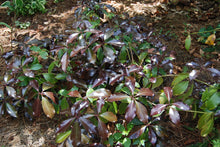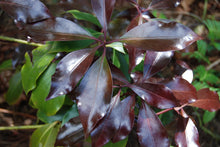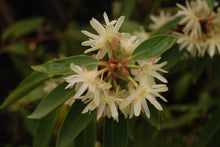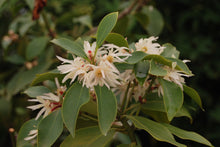Illicium anisatum 'Murasaki-no-sato' Purple Glaze™
Regular price
$28.00
Sale
Purple Glaze® Japanese Anise. This selection of the Japanese Anise Shrub has glossy deep burgundy new growth which hardens off to green. Each succeeding flush of growth through the summer will be just as intense, a deep glossy burgundy. The Japanese name, 'Murasaki-no-sato,' means "purple village." This species performs best under filtered sun or morning sun and afternoon shade. The flowers are the same ivory-white of the species with up to 30 petals each, and they begin to open here in March, or earlier during mild winters. But they open before any of the purple leaves emerge in the spring. The seed are produced in a star-shaped follicle which are quite fascinating in their geometric shape and closely resemble the star anise pods from the Chinese Anise, Illicium verum. But don't use the seed from this species as they are poisonous. When used in the landscape, give adequate moisture with good drainage and this is one of the easiest plants to grow in your garden. This genus is also one of those prized jewels that deer avoid. This species of Anise shrub plays a large role in Japanese religious ceremonies. It is burned as incense in Japan, where it is known as "shikimi." The parts of the plant itself are very toxic and should not be used in tea or any other brew which will be taken internally. The plant from which I took cuttings of this cultivar was 8-9' high with a 5' spread, almost conical in habit, but the species can attain a height of 15'. The plant was growing in the Gifu Prefecture near Mizunami City, but well up in the mountains, which is probably a zone 6, even though many references will list this species as zones 8-9. I frankly think that this is a reliable zone 7 if not a zone 6b in a sheltered location. Once established, it will surprise you on its rate of growth. One of my original cuttings taken in 2001 made a beautiful 6' plus specimen in 10 years.
Zones 7-9








